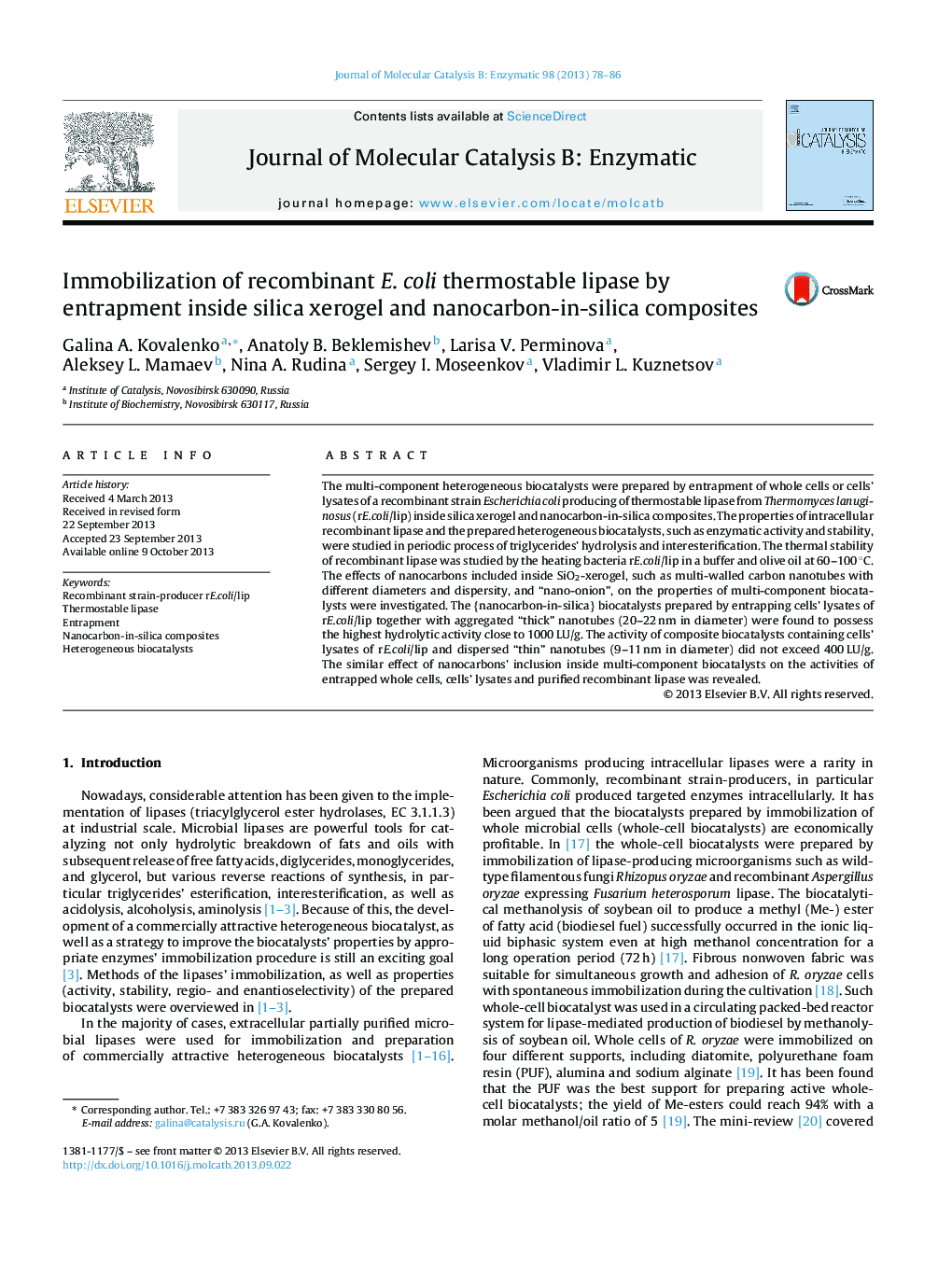| کد مقاله | کد نشریه | سال انتشار | مقاله انگلیسی | نسخه تمام متن |
|---|---|---|---|---|
| 69813 | 48794 | 2013 | 9 صفحه PDF | دانلود رایگان |

• Recombinant strain rE.coli/lip was constructed for producing thermostable lipase.
• Lysates of rE.coli/lip were entrapped inside silica- or nanocarbon-in-silica xerogel.
• Carbon nanotubes and “nano-onion” included had effect on the biocatalysts’ activity.
• The best positive effect of aggregated “thick” nanotubes on activity was observed.
• The heterogeneous biocatalysts were studied in oil-fat blend interesterification at 75 °C.
The multi-component heterogeneous biocatalysts were prepared by entrapment of whole cells or cells’ lysates of a recombinant strain Escherichia coli producing of thermostable lipase from Thermomyces lanuginosus (rE.coli/lip) inside silica xerogel and nanocarbon-in-silica composites. The properties of intracellular recombinant lipase and the prepared heterogeneous biocatalysts, such as enzymatic activity and stability, were studied in periodic process of triglycerides’ hydrolysis and interesterification. The thermal stability of recombinant lipase was studied by the heating bacteria rE.coli/lip in a buffer and olive oil at 60–100 °C. The effects of nanocarbons included inside SiO2-xerogel, such as multi-walled carbon nanotubes with different diameters and dispersity, and “nano-onion”, on the properties of multi-component biocatalysts were investigated. The {nanocarbon-in-silica} biocatalysts prepared by entrapping cells’ lysates of rE.coli/lip together with aggregated “thick” nanotubes (20–22 nm in diameter) were found to possess the highest hydrolytic activity close to 1000 LU/g. The activity of composite biocatalysts containing cells’ lysates of rE.coli/lip and dispersed “thin” nanotubes (9–11 nm in diameter) did not exceed 400 LU/g. The similar effect of nanocarbons’ inclusion inside multi-component biocatalysts on the activities of entrapped whole cells, cells’ lysates and purified recombinant lipase was revealed.
Figure optionsDownload as PowerPoint slide
Journal: Journal of Molecular Catalysis B: Enzymatic - Volume 98, 30 December 2013, Pages 78–86